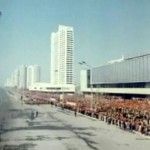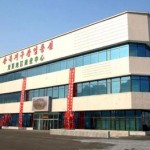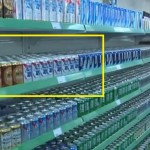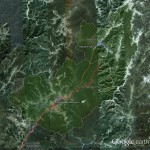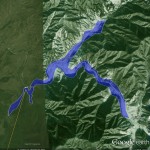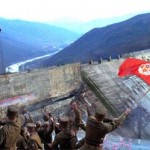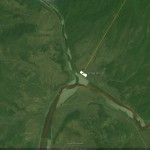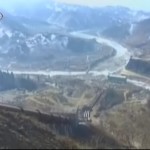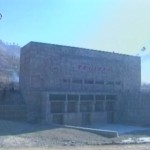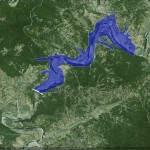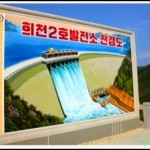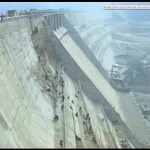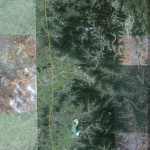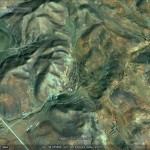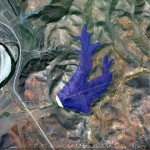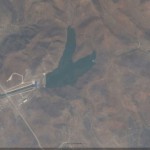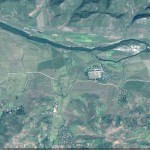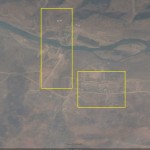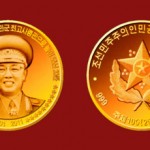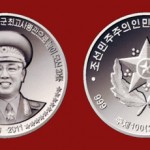UPDATE 1 (2012-1-19): Writing in the Asia Times, Michael Rank offers an update on the Ponghwa group (Ponghwajo, 봉화조):
It is widely assumed that if anyone knows what the North Koreans are up to, it’s the Chinese, and Chinese-language Internet sites have provided news stories about drug smuggling and border-crossing refugees. But there seems to have been a clampdown in the last year or two and these sources have dried up.
However, the Beijing magazine Kan Tianxia published a noteworthy article after Jong-il’s death highlighting the so-called Ponghwa group consisting of the sons (and presumably the occasional daughter) of the Pyongyang elite.
This privileged clique, which was first formed around 2000, consists of people mainly in their 30s and, the magazine claims, included Jong-eun himself after he returned home from his studies in Switzerland.
It says the group’s purpose is to strengthen Jong-eun’s power base and to act as his backstage support.
The article quotes an informed source as saying the Ponghwa group are mainly graduates of Kim Il-sung University, Pyongyang Foreign Languages University and other elite institutions, and that they tend to work in the security and intelligence apparatus and in top government organs such as the supreme procuratorate (prosecutor’s office).
The word Ponghwa means “smoke of battle” and also has connotations of “advance guard”. It is the name of the area of Pyongyang on the Taedong River that was the home of Kim Il-sung’s mother Kang Pan-sok; it is also the name of Pyongyang’s most elite hospital and there is a Ponghwa underground station.
The group is said to be headed by the sons of two generals. One of these is O Se-hyon, the second son of General O Kuk-ryol, who, according to the North Korea Leadership Watch (NKLW) blog, participated in a crucial meeting hours after Jong-il’s death which “began the order of operations which publicized KJI’s [Kim Jong-il’s] demise and taking on KJI’s remaining administrative and command mechanisms”.
The other leader is Kim Chol, son of General Kim Won-hong, who, according to rumors, was involved in various scandals but was nevertheless promoted to full general in 2009. General Kim, like the fathers of several Ponghwa members named in the article, belongs to the super-elite as is clear from his listing as a member of Jong-il’s funeral committee.
Ponghwa members also include the son of former veteran ambassador to Switzerland Ri Chol (Ri Tcheul) who is said to have been close to the young Jong-eun when he attended the International School in Bern, as well as the son of vice premier Kang Sok-ju. Kang was until 2010 the senior vice minister of foreign affairs and is, according to NKLW, a cousin of Jong-il; he also has has ties to Jong-eun’s mentors and uncle and aunt, Jang Song-taek and Kim Kyong-hui.
Members of elite groups such as the Ponghwa set are visible to the foreign community in Pyongyang where they frequent hard currency shops and restaurants, and have a clear parallel in China where the sons and daughters of top officials are assiduous in exploiting family connections.
Although Jong-eun is said to be as omniscient and omnipotent as his father and grandfather, almost nothing is known for sure about him. There is little doubt that he went to school in Switzerland, and the Chinese magazine claims this has been confirmed in North Korean “propaganda documents” – probably internal briefing materials distributed to senior officials.
Pyongyang watchers experienced a mild frisson when his mother was mentioned in a television documentary earlier this month, as this was the first time there had been official recognition that he has a mother. She has never been officially named, apparently because she was a Japanese-born Korean, and also because her relationship with Jong-il was not a happy one. She is said to have died in Paris in 2004.
Nobody is sure if Jong-eun was born in 1983 or 1984. According to a book written by his father’s former live-in chef [Kenji Fujimoto], his birthday is on January 8, but there were no signs of celebration in Pyongyang on that day. Perhaps it was considered unfitting to celebrate so soon after his father’s demise.
The only utterance attributed to Kim Jong-eun is a paean of praise to the joys of working all night. “Even when I work night after night, once I have brought joy to the comrade supreme commander, the weariness vanishes and a new strength courses through my whole body. This is what revolutionaries should live for.”
His father and grandfather were also fond of lauding the joys of working through the night, and there’s nothing North Korean leaders fear more than original thinking.
ORIGINAL POST (2011-4-18): Today the media was abuzz with rumors of the DPRK’s most exclusive club: Ponghwajo (aka: Bonghwajo, 봉화조). This club is composed of the children of ruling elites, and according to the rumors, they not only generate substantial sums of hard currency, but they also know how to spend it. Below are some stories about the group:
Choson Ilbo:
When Kim Jong-chol, the second son of North Korean leader Kim Jong-il, spent 10 leisurely days in Singapore in February going on a luxury shopping spree and attending an Eric Clapton concert, he was apparently joined by a brat pack of children of powerful officials in North Korea.
An official source here said Sunday intelligence information reveals Kim Jong-chol (30) and members of the so-called Ponghwajo or torch group not only visited Singapore, but also went to Macao and Malaysia to gamble and shop.
The Ponghwajo consists of the regime’s princelings, not to be confused with the children of early high-ranking officials who fought as revolutionaries along with former North Korean leader Kim Il-sung. These sons of the revolutionaries are now in their 50s and 60s and have recently been tapped to serve in key positions under North Korea’s heir apparent Kim Jong-un.
But the Ponghwajo are in their 30s and 40s and are not viewed favorably by the regime’s leadership. Though they are often engaged in activities that generate dollar revenues through drug sales, counterfeiting and black market trade, they apparently do not wield much political power.
The group was formed in the early 2000s by O Se-won, the son of Gen. O Kuk-ryol, a senior leader in North Korea’s powerful National Defense Commission, and Kim Chol, the son of Kim Won-hong, head of the People’s Army Security Command. Its members include Ri Il-hyok, the first son of Ri Chol, former North Korean ambassador to Switzerland and the official in charge of handling Kim Jong-il’s secret bank accounts, as well as Kang Tae-seung, the eldest son of First Vice Foreign Minister Kang Sok-ju and Jo Song-ho, the eldest son of the late Jo Myong-rok, first vice chairman of the National Defense Commission who died last year.
Donga Ilbo:
Certain members of Bonghwajo, a club of the children of North Korea’s power elite, accompanied Kim Jong Chul, 30, the second son of North Korean leader Kim Jong Il, when the junior Kim attended Eric Clapton’s concert in Singapore in February.
Like “Crown Prince Party, or The Princelings,” a group of the children of prominent and influential senior communist officials in China, Bonghwajo is comprised of children of ranking officials of the North Korean Workers’ Party, military and senior members of its Cabinet.
Due to their parents’ influence, the children reportedly landed jobs at powerful organizations and are earning money through illegal activities such as counterfeiting and narcotics trafficking.
A source on North Korea said, “Kim Jong Chul is forming a closer relationship with Bonghwajo members after his younger brother Jong Un was named Kim Jong Il’s heir apparent.”
“When Jong Chul went to Singapore to watch Eric Clapton’s concert, certain Bonghwajo members accompanied him and paid all of the costs for his stay and shopping in Singapore.”
The source said, “Jong Chul and Bonghwajo members visited not only Singapore but also Macau and Malaysia in February,” adding, “Visiting the three countries, they gambled with up to 300,000 U.S. dollars and purchased expensive products at department stores.”
Formed in the early 2000s, Bonghwajo is reportedly led by O Se Hyon, second son of National Defense Commission Vice Chairman O Kuk Ryul, and Kim Chul, first son of the General Political Department Director Kim Won Hong at the People`s Army. Kim Jong Un joined the club when he turned 20, while Kim Chang Hyok, son of Kim Chung Il, deputy director of Kim Jong-Il`s personal secretariat, also became a member.
Bonghwajo was named after the village of Bonghwa in Pyongyang`s Kangdong County, where Kim Jong Il’s grandmother Kang Ban Sok lived. Bonghwa is construed as meaning “frontier” in North Korea.
Bonghwa Medical Center, the North’s top hospital, is where Kim Jong Il underwent treatment when he suffered a stroke in 2008.
Bonghwajo is also known to deal in illegal activities such as counterfeiting and drug trafficking. The Washington Times reported in May last year that Bonghwajo was involved in illegal activities, including circulation of “super notes,” or ultra-high precision counterfeit 100-dollar bills, and drug trafficking.
U.S. intelligence say O Se Hyon was entangled in the incident of the Bongsu-ho, North Korea’s drug trafficking boat that was caught by Australia in April 2003, and is related with counterfeit bills discovered in Las Vegas in 2004.
Bonghwajo members are said to be habitually taking drugs as well as trafficking them. Kim Chul, who works at the general surveillance bureau under the (North) Korean People’s Army Ministry, is earning money through drug trafficking in China and elsewhere and paying kickbacks to Kim Jong Un and Kim Jong Chul.
The group is even called a narcotics club because drug use is so rampant among members, with leader O Se Hyon undergoing treatment at a detention facility due to heroine inhalation.
Daily NK:
The existence of ‘Bonghwajo’, a grouping of the children of North Korea’s highest leadership including Kim Jong Eun, has made headlines in South Korea in recent days, raising questions about what role this group of powerful youngsters might be playing in the succession.
‘Bonghwajo’ members are said to be involved in foreign currency-earning businesses, many of them illegal, while also working in key areas of the National Security Agency, General Bureau of Reconnaissance, Ministry of the People’s Armed Forces, Central Prosecutors’ Office and other high organs. They reportedly curry favour by financially supporting both Kim Jong Eun and elder brother Kim Jong Cheol.
Therefore, one analysis has it that the Bonghwajo, which is analogous with China’s ‘Princelings’ is both a group for the strengthening of Kim Jong Eun’s power and a private bank through which to finance the successor’s activities.
Cho Young Ki, a professor with Korea University, told The Daily NK today, “Bonghwajo can be read as being Kim Jong Eun’s support group. The Three Revolutionary Teams took the initiative in the establishment of Kim Jong Il’s power, and I presume that Bonghwajo might be performing the same role.”
Professor Cho added, “Kim Jong Cheol, who lost his practical power after publicizing the succession structure, is likely to be providing this group with his support.”
Head of World North Korea Study Center An Chan Il agreed, suggesting, “It appears that Bonghwajo may be intervening in personnel management while offering funds for Kim Jong Eun obtained from foreign currency-earning businesses.”
An went on to describe a group led by Kim Jong Il’s half brother Kim Pyong Il and Oh Il Cheong (the son of former Minister of the People’s Armed Forces Oh Jin Wu) at the time of Kim Jong Il’s elevation.
An said, “Even though we didn’t know their name, there was a group that came before ‘Bonghwajo’, and the nature of ‘Bonghwajo’ could be the same as that of the group led by Kim Pyong Il.” He went on, “Kim Pyong Il worked as the group’s main leader, but then he was put in a ‘sub-branch’ and got sent overseas. But Oh Il Cheong switched line and is now a Lieutenant-General.”
The ‘Bonghwajo’ group may well consider that it is in the same boat as Kim Jong Eun. Therefore, its members are likely to work to expand their power in the Party, military and foreign currency earning organs so to ensure Kim Jong Eun’s succession and their own access to power and money for the years to come.
The core members of the Bonghwajo are said to be Oh Se Hyun, the second son of Vice Chairman of the National Defense Commission Oh Keuk Ryul, Kim Cheol, who is the eldest son of Kim Won Hong (the vice director in charge of political organization in the General Political Department of the People’s Army), Kang Tae Sung, the eldest son of Vice Premier of the Cabinet Kang Suk Ju, Kim Cheol Woong, the second son of Kim Choong Il (a former vice director in Kim Jong Il’s Secretary’s Office), and Cho Sung Ho, the eldest son of Cho Myeong Rok (former first vice chairman of the National Defense Commission).
However, professor Cho pointed out, “Even if Bonghwajo make an effort to establish Kim Jong Eun’s smooth power succession, it is doubtful whether they can reign properly. The extent of their activities and legitimacy may decide whether or not they are able to support Kim Jong Eun.”
Meanwhile, Yonhap News has claimed that drugs are so prevalent within the group that it is known as a drug club, and Oh Se Hyun has reportedly been treated for addiction.

